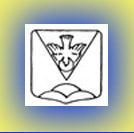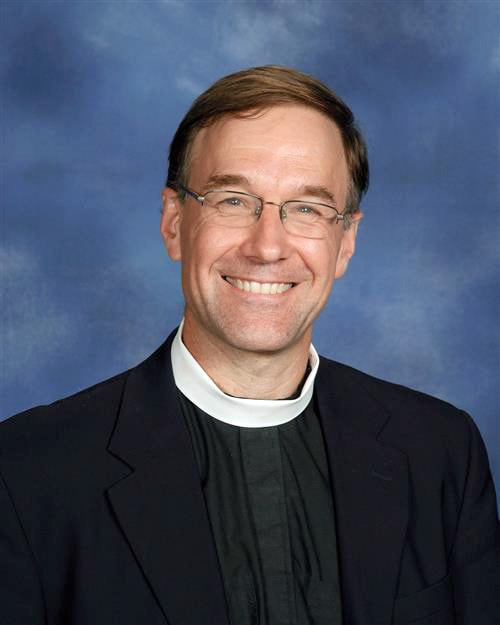|
The Gospel reading we just heard is one of the most dramatic passages in the New Testament. We mostly know the story. And we have probably all seen lots of images of this scene. But it’s helpful to picture it again in our minds.
As we picture it, remember that Mary is young. According to tradition, Mary was betrothed to Joseph before she started menstruating. Today that would be about twelve. In the first century it would have been a little later, so maybe Mary was fifteen or sixteen. That’s still really young. Remember, too, that angels are big and scary. The Bible never describes what an angel actually looks like. But whenever they appear, including in this scene, angels lead with “Do not be afraid.” As I picture it, little Mary is looking up, way up, at a massive and obviously very powerful angel. When the angel first greets Mary, Luke says she was “much perplexed.” I am guessing that is a significant understatement. It must have been terrifying for her. And then there is Gabriel’s message. Gabriel announces that Mary will conceive and bear a child who will be called the Son of the Most High and who will inherit the throne of King David. What do you say to something like that? I don’t have any idea how I would have responded. I have tried, but I cannot put myself in Mary’s position in this moment. The whole thing is too big to take in. And, I say what is obvious, I am considerably older than Mary was at the time, and I already know the story. Apparently Mary was not able to take it all in right away either. It’s like she stopped listening after the angel’s first sentence about conceiving and bearing a child. That’s not really the surprising part of what the angel says. Lots of people conceive and bear children. None of them are virgin births, of course. But the angel doesn’t actually say anything about a virgin birth here. That very important piece of information comes later. The astonishing thing that the angel says to Mary here is, your child will be the Son of God. And, after a moment to take it all in, Mary’s astonishing response is, OK. “Here am I….Let it be with me according to your word.” I need to emphasize just how impressive that is. In what appears to be mere seconds, Mary manages to go from the shocked question, ‘how can this be,’ to the faithful and obedient response, ‘let it be so.’ We can’t know how Mary managed to make that move from initial disbelief to faithful obedience so quickly. My guess is, God chose Mary precisely because she could make that move, and she could make it faster and more completely than any other human being. We can only follow Mary’s example imperfectly, at best. But we, too, are called to make that move, particularly in this season and particularly at this moment in human history. For most of us, an angel is not likely to show up in all his awesome glory and certainly not with news as momentous as what Gabriel delivers to Mary. But, thanks in part to Mary’s faithfulness, we do receive a message almost as astonishing. God loves us in all our messiness and our sinfulness. God loves us enough to become incarnate from the Virgin Mary and to be made man. God loves us enough to die on the cross for us. God loves us enough to dwell in us and among us. That is big news, and even though it is familiar, it is still a little hard to take in. If we are perfectly honest, sometimes we say, in effect, how can this be? How can God love me like that? How can God love me like that, knowing who I really am deep down inside? How can it be true that I am God’s beloved child destined for eternity with God? That is not all we have to take in. God is at work in all of creation, redeeming and restoring creation, moving creation, including us, closer and closer to the dream that God has for all of us. But we look around at the world. We think about all of the grim problems we face, particularly right now, in the middle of a pandemic, and we say again, how can this be? How can God truly be at work in the world around us, given all that we see? There is still more. Not only does God love and redeem us and all of creation. God invites us to be part of the redemption team, to be agents of God’s mission, to play a part in God’s redemption of the world. And we say yet again, how can this be, given how weak and broken I am? But that is the vision. That is the good news of great joy. That is the Gospel of Jesus Christ. God loves us. God redeems us and the world. And we are invited to be part of God’s redemption of all things. The invitation in our Gospel reading for this morning is to hear that good news in all of its incredible goodness, to let that good news sink in, to move beyond our hesitations and fears and doubts, to go from ‘How can this be?’ to ‘Here am I,’ ready and willing both to receive and to share God’s grace and God’s good news. I am still making that move. I think we all are. Some days, I get stuck wondering how could it all possibly be. Other days I have moments when the good news does sink in, when I know that God is with me, that God’s kingdom is coming. On my best days, I even have very brief moments when I feel like I could say, ‘Here am I, the servant of the Lord; let it be with me according to your word.’” Then, unfortunately, I regress. But today, on this fourth Sunday of Advent, just four days from Christmas Eve, I give thanks that God loves us enough to be born as a human being. I give thanks to God for the faithfulness of the Virgin Mary who shows us how we should respond. I give thanks to God for those moments when the good news really does sink in. And I pray that God will open us more and more to the good news of great joy that God loves us forever. In Jesus’ name. Amen.
1 Comment
Mary Moore
12/22/2020 02:16:56 pm
I give thanks that God helps us move closer to Him by nudging us out of our comfort zones, but at the same time being right there to give us the courage and the strength we need to succeed.
Reply
Leave a Reply. |
Rector
Rev. Dr. Harvey Hill Third Order Franciscan Archives
July 2024
Categories |


 RSS Feed
RSS Feed
